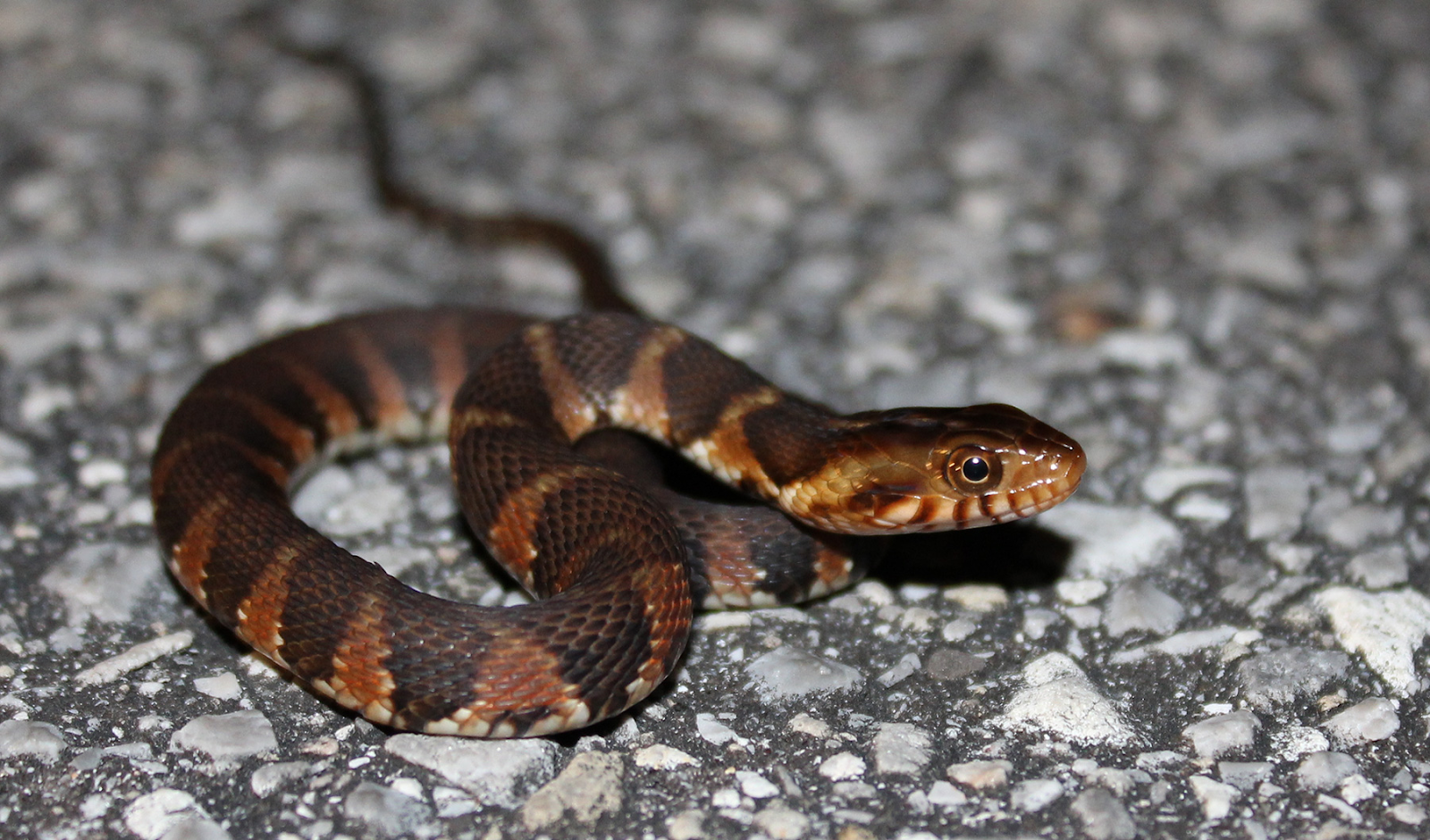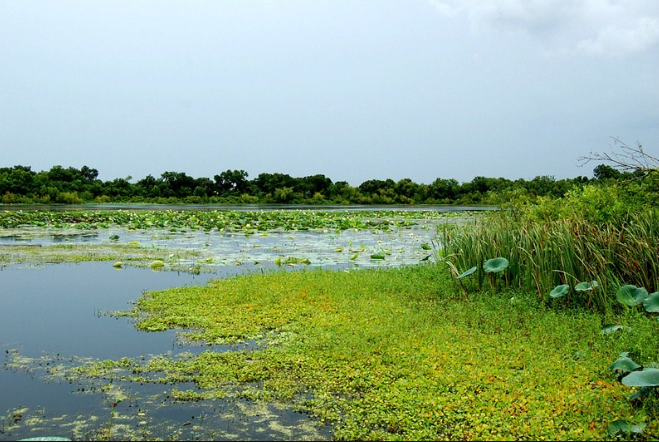Invasive Plants and Animals
Invasive Plants and Animals
Upper Feather Watershed Description:
- The Upper Feather Watershed is a biodiversity hotspot. It has rare and endangered frogs, has thousands of native plants, and has the largest bird population in the Sierra. It also has a triple-junction allowing for species to mingle.
Native Species:
- Mountain Sucker
- Feather River Stonecrop
- Gray Wolves
- Foothill yellow-legged frog
- Sierra Nevada yellow-legged frog
- California red-legged frogs
- Western Bumble Bees
Invasive Animals in Upper Feather River Watershed:
- Nutria (Myocastor coypus):
- Nutria resemble beavers but with a round hairy tail and arched back.
- Nutria Impacts:
- Nutria cause extensive damage to native plants, soil structure and agriculture crops nearby due to their eating habits. About 10% of the plants material they eat is destroyed. Due to the loss, it causes severe soil erosion, which can make the marsh land into open water. Nutria also burrow 6 meters deep and 50 meters into the bank which causes many issues including streambank erosion, levee failures, roadbed collapses and increased sedimentation.
- Chinese mitten crab (Eriocheir sinensis):
- Medium sized crab with hairy claws
- Chinese Mitten Crab Impacts:
- Chinese mitten crabs increase erosion, causing the weakening and/or collapse of flood control and water supply system due to their burrowing activities. When they burrow, they cause damage to dikes, levees and stream banks. They also have been seen messing with the fishing industry by stealing bait, they damage commercial fishing nets, compete with native species, and can transfer disease and parasites to native species. They also clog fish salvage structures.
- Channeled apple snail (Pomacea canaliculata):
- Freshwater snails about 3 inches in length. Has a gill and lung allowing for them to breath in and out of water.
- Channeled Apple Snail Impacts:
- Channeled Apple Snail consumes aquatic plants and have been seen destroying rice crops. They have also been seen modifying wetlands and the freshwater ecosystem by competing with native species,, modifying plant communities and modifying the nutrient cycling. They can also carry Rat Lungworm, which can be transferred to humans.
- New Zealand mudsnail (Potamopyrgus antipodarum):
- 4-6 mm long aquatic snail. These snails are live-bearers (ovoviviparous and parthenogenic), meaning they have live young rather than eggs. The offspring are all females that asexually reproduce which mean they already have developing embryos in their system when born and when they reach maturity, they have up to 230 females per year.
- New Zealand Mudsnail Impacts:
- The New Zealand Mudsnail displaces native species by eating insects such as mayflies, chironomids, etc., which salmon and trout eat. They consume about half of a streams food resources. This mudsnail impacts fisheries due to the poor guts of trout's from eating non nutritious foods such as the New Zealand Mudsnail. If the trout eats too many of the New Zealand Mudsnail, they will lose body weight, which is equal to starvation impact.
- Southern Watersnake (Nerodia fasciata):
- Thick bodied, 5 foot long, aquatic snake. There are three subspecies including banded, broad-banded, and Florida. They have crossbands that run the whole body amd a dark stripe going from eye to corner of mouth. They are not venomous, but release a foul-smelling musk mixed with feces when threatened.
- Southern Watersnake Impacts:
- The Southern Watersnake out-competes native animal species due to the variety of animals they eat, and their ability to adapt to different freshwater habitats, tolerance for brackish water and they are able to go on land to feed. They also have high reproductive rates.
- Bighead Carp (Hypophthalmichthys nobilis):
- Freshwater fish with head that is 1/3 larger than their body. they can grow up to 4 feet in length. They have long, thin, unfused gills allowing for them to filter feed zooplankton and large phytoplankton.
- Bighead Carp Impacts:
- The bighead carp eat large amounts of plankton and is a competition for native species. When too many plankton are eating, it can cause more algal blooms, and can cause the water quality to go down. Bighead Carp is also a carrier of diseases that can be transferred to native species.
- Alligator weed ( Alternanthera philoxeroides):
- Alligator Weed Impacts:
- The Alligator Weed can cause the rice fields crop yield to lower, and can block canals which forces changes to cultural practices. The Alligator Weed is a lso a great place for mosquitos to lay their larvae, so the mosquito population increases.
- Broom species (Cytisus scoparius):
- Broom Species Impacts:
- The Scotch Broom has displaced native planes and makes reforestation difficult by forming a dense monospecific stand and being a strong competitor by creating a biomass if over 40,000 hectare in 3-4 years. They can carry fire wo tree canopy's which increase the intensity and frequency of fires. They cannot be used for anything due to seeds being toxic for ungulates, and the foliage causing digestive issues in horses.
- South American spongeplant (Limnobium laevigatum):
- South American Spongeplant Impacts:
- The South American Spongeplant has a quick seed production/ vegetation growth that can form thick mats across the water and can cause issues for fish, boats, etc.
- California’s Invaders: Bighead Carp. (2024). California Department of Fish and Wildlife. https://wildlife.ca.gov/Conservation/Invasives/Species/Bighead-Carp
- California’s Invaders: Southern Watersnake. (2024). California Department of Fish and Wildlife. https://wildlife.ca.gov/Conservation/Invasives/Species/Southern-Watersnake#:~:text=In%20California%2C%20southern%20watersnakes%20are,reservoir%20along%20the%20American%20River.
- California’s Invaders: New Zealand Mudsnail. (2024). California Department of Fish and Wildlife. https://wildlife.ca.gov/Conservation/Invasives/Species/NZmudsnail
- California’s Invaders: Channeled Apple Snail. (2024). California Department of Fish and Wildlife. https://wildlife.ca.gov/Conservation/Invasives/Species/Channeled-Apple-Snail
- California’s Invaders: Chinese Mitten Crab. (2024). California Department of Fish and Wildlife. https://wildlife.ca.gov/Conservation/Invasives/Species/Mitten-Crab
- Discovery of Invasive Nutria in California. (2024). California Department of Fish and Wildlife. https://wildlife.ca.gov/Conservation/Invasives/Species/Nutria/Infestation#:~:text=Nutria%20were%20originally%20introduced%20to,contracts%20with%20USDA%2DWildlife%20Services.
- Limnobium spongia. (2024). CALIPC. https://www.cal-ipc.org/plants/profile/limnobium-laevigatum-profile/#:~:text=Limnobium%20spongia%20(South%20American%20spongeplant,%2C%20fish%2C%20and%20water%20infrastructure.
- IPCW Plant Report. (2024). CALIPC. https://www.cal-ipc.org/resources/library/publications/ipcw/report39/
- Kelch, Dean. Alligatorweed | Alternanthera philoxeroides. (2017). Pest Rating Proposals and Final Ratings. https://blogs.cdfa.ca.gov/Section3162/?p=4184











Comments
Post a Comment